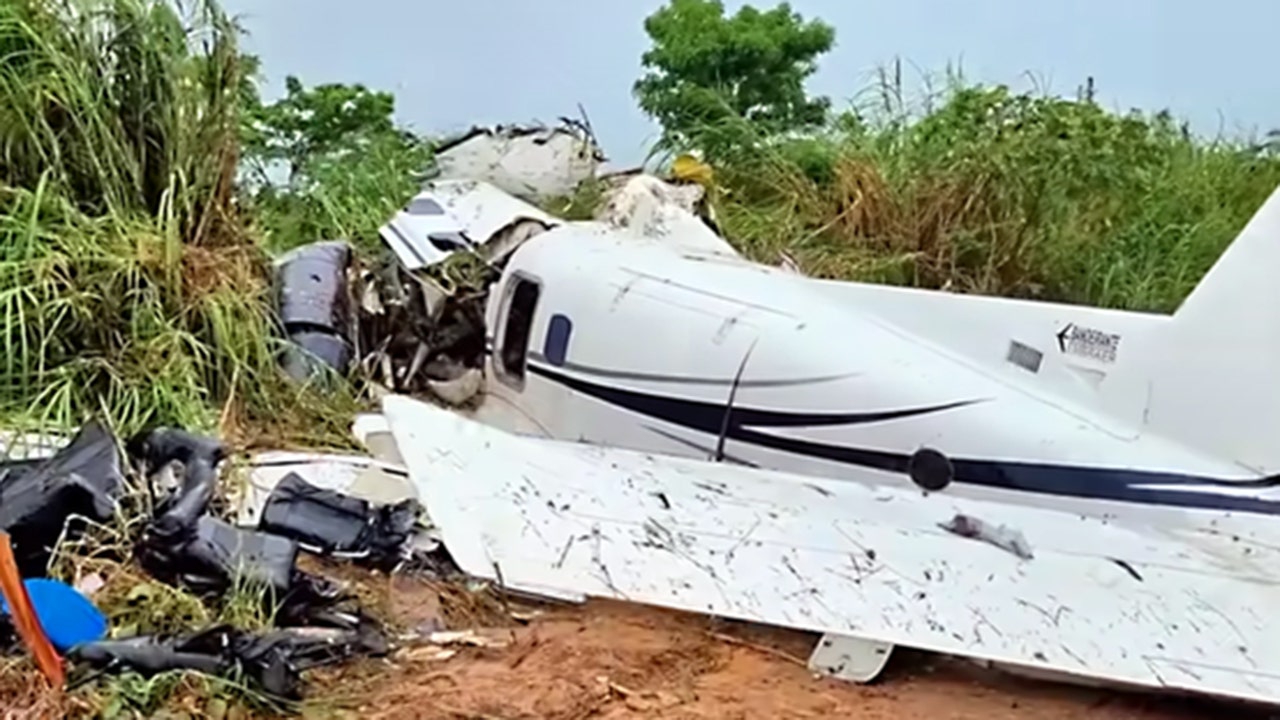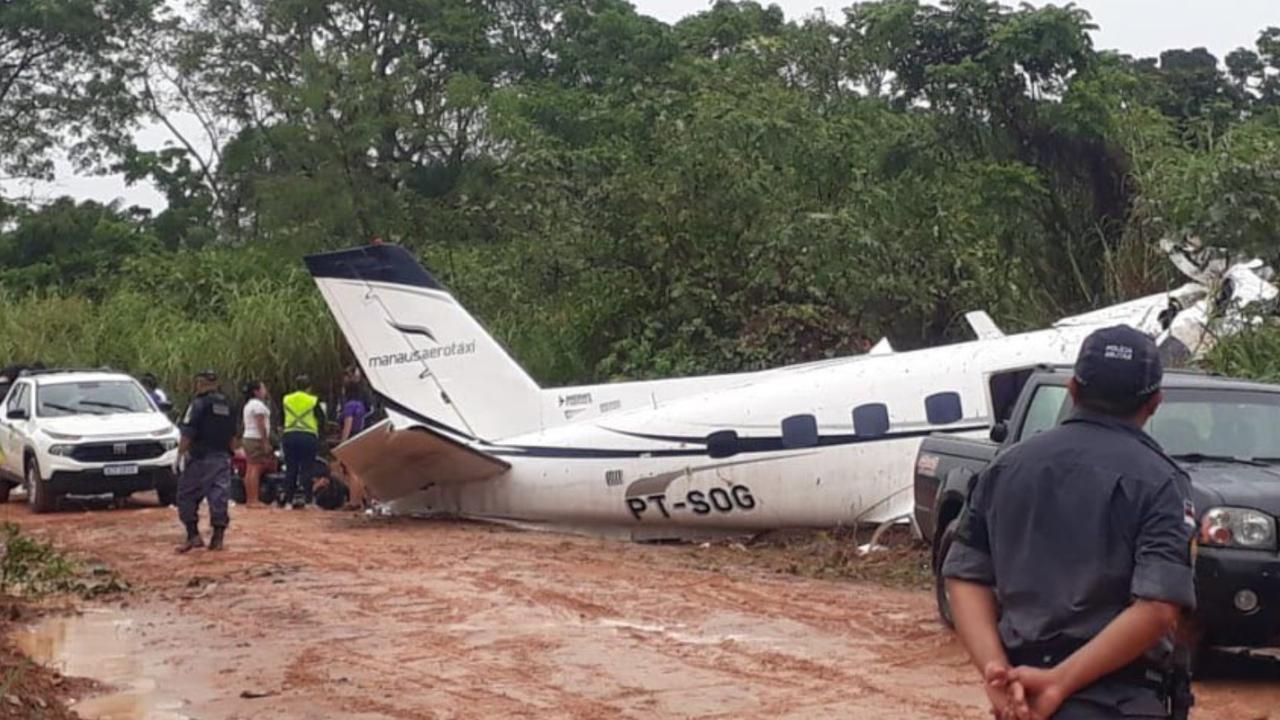Historical Overview of Plane Crashes in Brazil: Plane In Brazil Crash

Brazil, a country known for its vibrant culture, vast landscapes, and burgeoning economy, has also witnessed its share of aviation tragedies. From the early days of air travel to the modern era, plane crashes have unfortunately marked the country’s aviation history. This section delves into the historical context of plane crashes in Brazil, exploring significant incidents, contributing factors, and the evolution of aviation safety regulations.
Timeline of Significant Plane Crashes
The following timeline highlights some of the most notable plane crashes in Brazil, providing a glimpse into the country’s aviation safety journey:
- 1946 – Cruzeiro do Sul Flight 16 – This crash, involving a Lockheed Constellation aircraft, occurred near the Azores Islands on January 17, 1946. All 24 passengers and crew members perished in the incident, marking one of the deadliest plane crashes in Brazilian aviation history. The crash was attributed to a combination of factors, including poor weather conditions, mechanical issues, and possible pilot error.
- 1950 – Varig Flight 967 – On July 31, 1950, a Douglas DC-4 aircraft operated by Varig crashed near the town of Caratinga, Minas Gerais. The crash, which claimed the lives of 21 people, was caused by a mechanical failure in one of the engines.
- 1961 – Transbrasil Flight 114 – On September 1, 1961, a Lockheed Electra aircraft operated by Transbrasil crashed near the city of Santos, São Paulo. The crash, which killed 34 people, was attributed to pilot error.
- 1973 – Varig Flight 837 – On July 11, 1973, a Boeing 707 aircraft operated by Varig crashed near the town of Ponto Novo, Bahia. The crash, which killed 131 people, was caused by a mechanical failure in one of the engines.
- 1982 – TAM Airlines Flight 352 – On January 27, 1982, a Fokker F27 Friendship aircraft operated by TAM Airlines crashed near the city of São Paulo. The crash, which killed 12 people, was attributed to pilot error.
- 1989 – VASP Flight 168 – On September 3, 1989, a Boeing 737-200 aircraft operated by VASP crashed near the city of São Paulo. The crash, which killed 137 people, was attributed to a combination of factors, including pilot error and mechanical issues.
- 2006 – Gol Transportes Aéreos Flight 1907 – On September 29, 2006, a Boeing 737-800 aircraft operated by Gol Transportes Aéreos collided with an Embraer Legacy 600 business jet over the Amazon rainforest. The Gol aircraft crashed, killing all 154 people on board. The collision was attributed to pilot error.
- 2007 – TAM Airlines Flight 3054 – On July 17, 2007, a Boeing 737-800 aircraft operated by TAM Airlines overran the runway at São Paulo-Congonhas Airport, crashed into a hangar, and caught fire. The crash, which killed 199 people, was attributed to a combination of factors, including pilot error, weather conditions, and runway conditions.
Historical Context and Factors Contributing to Plane Crashes, Plane in brazil crash
Understanding the historical context surrounding these crashes provides insights into the evolving landscape of aviation safety in Brazil.
- Early Years of Aviation (1920s-1940s): During the early days of aviation, safety regulations were less stringent, and infrastructure was limited. This period witnessed a number of crashes attributed to factors like pilot inexperience, inadequate maintenance, and lack of advanced navigation systems.
- Post-World War II (1950s-1970s): The post-war era saw a surge in air travel, leading to increased demand for air services. While aviation safety regulations improved during this time, accidents still occurred, often due to factors like pilot fatigue, mechanical failures, and inadequate air traffic control systems.
- Economic Growth and Increased Air Traffic (1980s-Present): With Brazil’s economic growth and rapid urbanization, air travel became increasingly popular. This period witnessed a shift in the causes of crashes, with factors like pilot error, maintenance issues, and air traffic control failures becoming more prominent.
Analysis of Causes and Contributing Factors
Plane crashes are devastating events that can have far-reaching consequences. Understanding the factors that contribute to these tragedies is crucial for improving aviation safety and preventing future occurrences. In Brazil, as in other parts of the world, a range of factors can contribute to plane crashes, each with its own set of contributing elements.
Pilot Error
Pilot error is a significant factor in many plane crashes worldwide, including Brazil. This can encompass a wide range of mistakes, from misjudging altitude and speed to failing to follow proper procedures during emergencies. Fatigue, stress, and lack of experience can also contribute to pilot error.
- In 2006, a Gol Airlines Boeing 737-800 collided with a private Embraer Legacy 600 over the Amazon rainforest. The investigation revealed that the Gol pilot failed to notice the Legacy on his radar and did not take appropriate evasive action. The Legacy pilot, however, managed to safely land the aircraft. This tragic incident highlighted the importance of pilot vigilance and situational awareness.
- In 2007, a TAM Airlines Airbus A320 crashed during landing at Congonhas Airport in São Paulo. The investigation revealed that the pilot had misjudged the runway length and had attempted to land short of the runway threshold. This incident also highlighted the importance of pilot training and adherence to safety procedures.
Mechanical Failure
Mechanical failure can also play a significant role in plane crashes. This can include issues with engines, hydraulic systems, control surfaces, and other critical components.
- In 1979, a Varig Airlines Boeing 707-320C crashed near the Azores Islands. The investigation revealed that a mechanical failure in the aircraft’s hydraulic system caused the crash. This incident highlighted the importance of regular aircraft maintenance and inspections.
- In 2012, a TAM Airlines Airbus A320 crashed during landing at Congonhas Airport in São Paulo. The investigation revealed that the aircraft had experienced a mechanical failure in its landing gear, which caused the aircraft to skid off the runway and crash. This incident highlighted the importance of maintaining the aircraft’s landing gear systems and ensuring that they are in proper working order.
Weather Conditions
Weather conditions can also contribute to plane crashes, particularly in a country like Brazil with diverse and sometimes unpredictable weather patterns. Severe thunderstorms, heavy rain, and strong winds can all pose significant risks to aircraft.
- In 1982, a Varig Airlines Boeing 737-200 crashed near the city of Belém, Brazil. The investigation revealed that the aircraft had encountered severe thunderstorms, which caused the aircraft to stall and crash. This incident highlighted the importance of weather forecasting and avoiding flying in hazardous weather conditions.
- In 2009, a Gol Airlines Boeing 737-800 crashed near the city of Rio de Janeiro. The investigation revealed that the aircraft had encountered heavy rain and low visibility, which contributed to the crash. This incident highlighted the importance of pilot training and experience in handling adverse weather conditions.
Terrorism
While less common than other factors, terrorism has also been a cause of plane crashes in Brazil.
- In 1970, a Varig Airlines Boeing 707-320C was hijacked by a group of Palestinian terrorists. The terrorists demanded the release of prisoners in Israel and threatened to blow up the aircraft. The aircraft was eventually landed safely, and the terrorists were arrested. This incident highlighted the importance of airport security and the need to prevent terrorist attacks on aircraft.
Human Factors
Human factors, such as fatigue, training, and communication, can also play a significant role in plane crashes. Fatigue can impair a pilot’s judgment and reaction time, while inadequate training can lead to mistakes and errors. Poor communication between crew members can also lead to misunderstandings and misinterpretations, which can contribute to accidents.
- In 2014, a TransAsia Airways ATR 72-600 crashed in Taiwan. The investigation revealed that the pilot had been fatigued and had not followed proper procedures during the flight. This incident highlighted the importance of pilot rest and fatigue management.
- In 2018, a Lion Air Boeing 737 MAX crashed in Indonesia. The investigation revealed that the pilot had not received adequate training on the aircraft’s new automated flight control system. This incident highlighted the importance of pilot training and the need to ensure that pilots are properly trained on all aspects of the aircraft they are flying.
Plane in brazil crash – The recent plane crash in Brazil highlights the critical need for comprehensive safety protocols within the aviation industry. Such events often lead to immediate safety measures, such as ground stop nyc airports , to ensure the well-being of passengers and crew.
While ground stops are a temporary measure, the investigation into the Brazilian crash will undoubtedly lead to long-term changes in aviation safety practices.
The recent plane crash in Brazil has highlighted the importance of robust communication and data transfer systems. Such tragedies often involve a complex interplay of factors, requiring immediate and accurate information dissemination. This underscores the potential of digital currencies like ripple xrp for streamlining financial transactions and facilitating rapid communication, especially in emergency situations.
In a world increasingly reliant on technology, understanding the intricacies of these systems becomes crucial, especially when faced with events like the Brazil plane crash.

